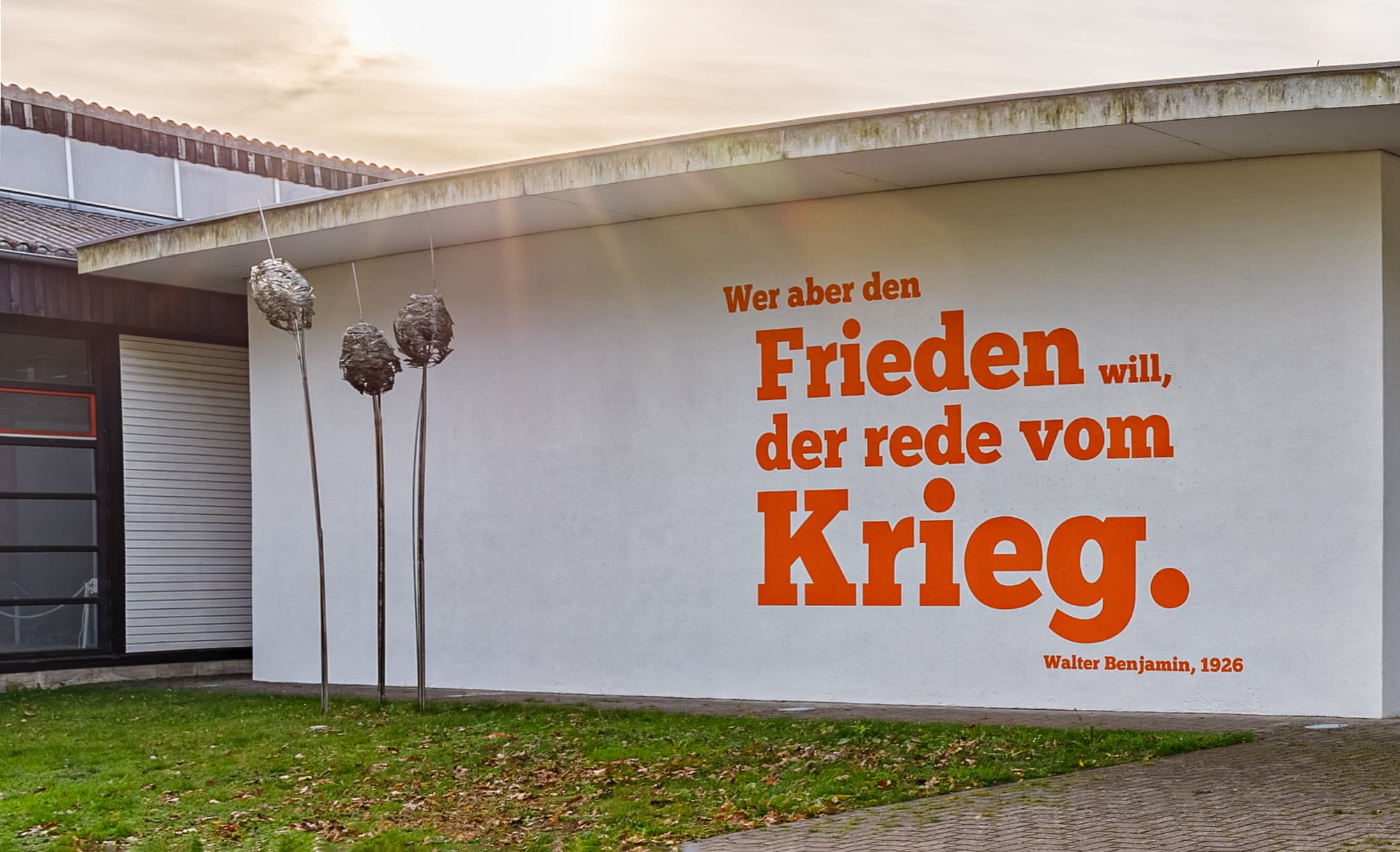
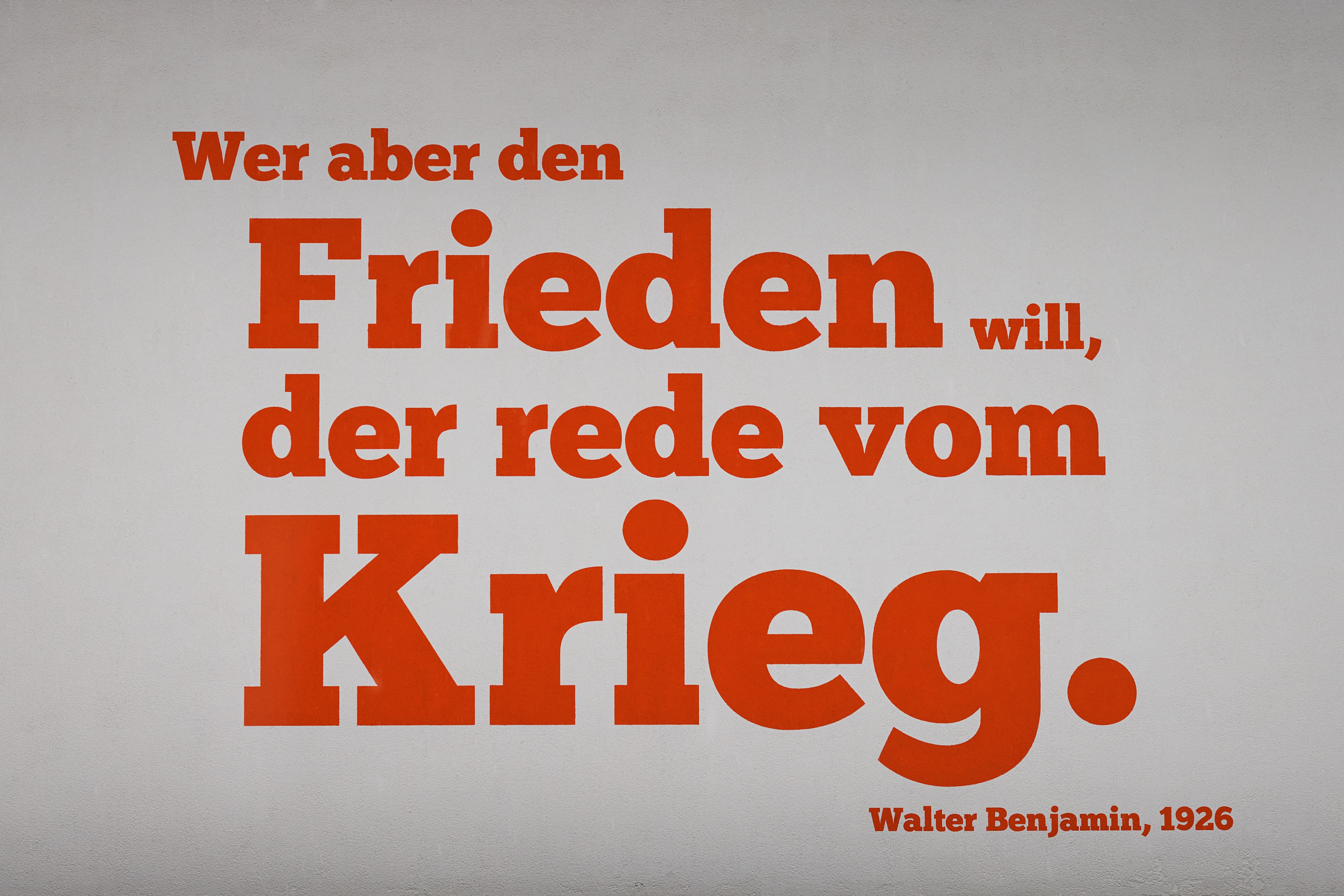
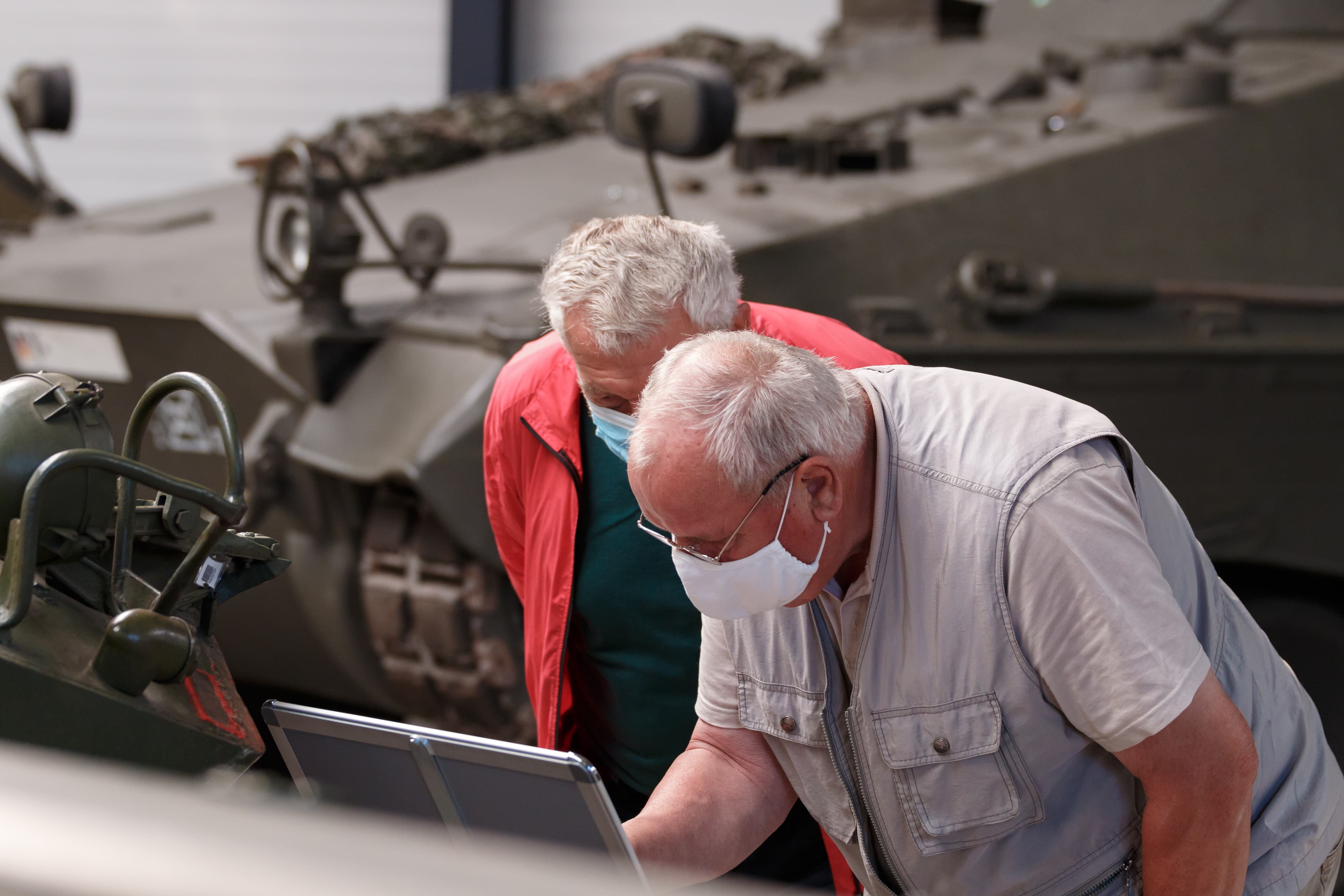

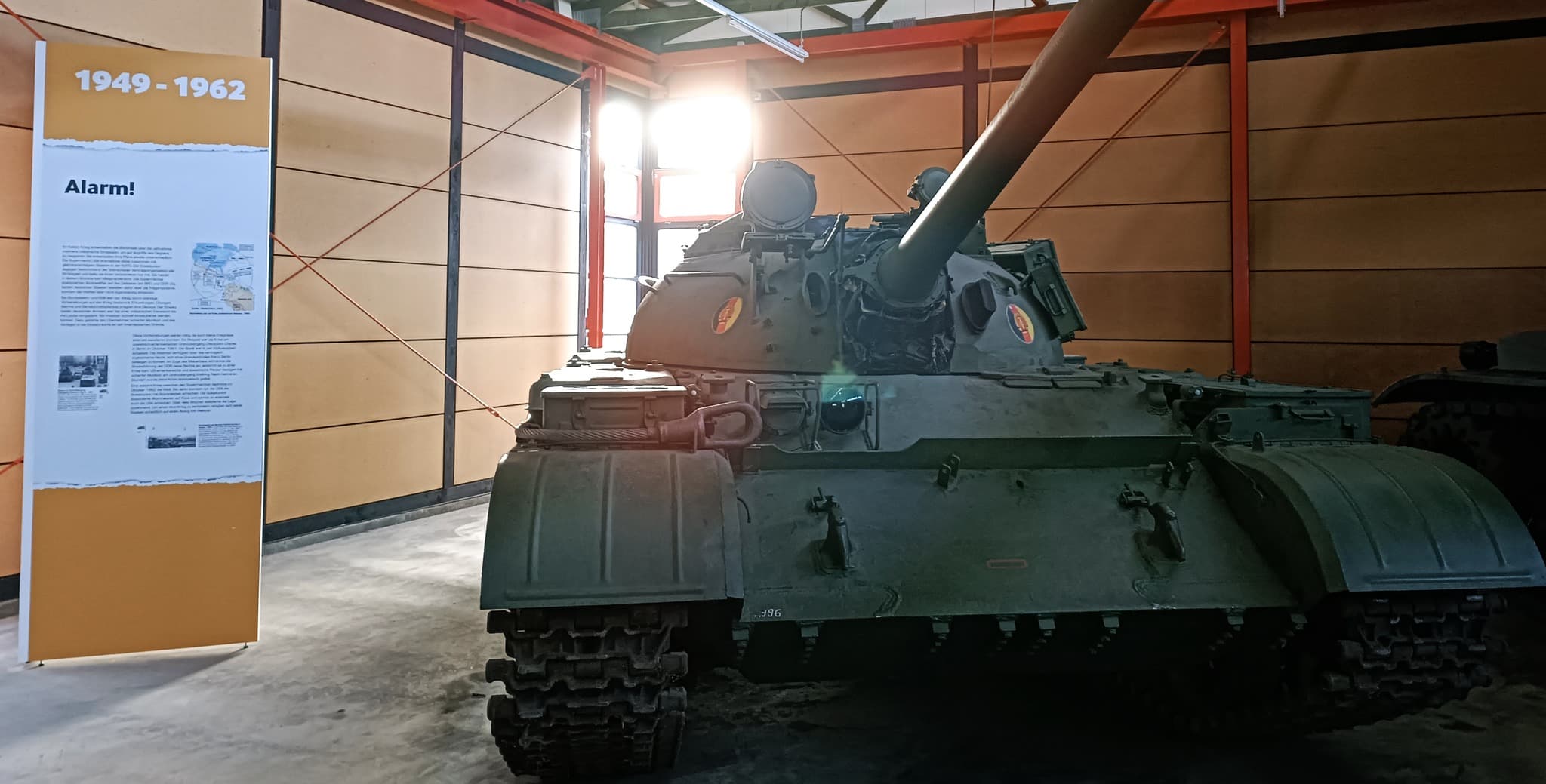
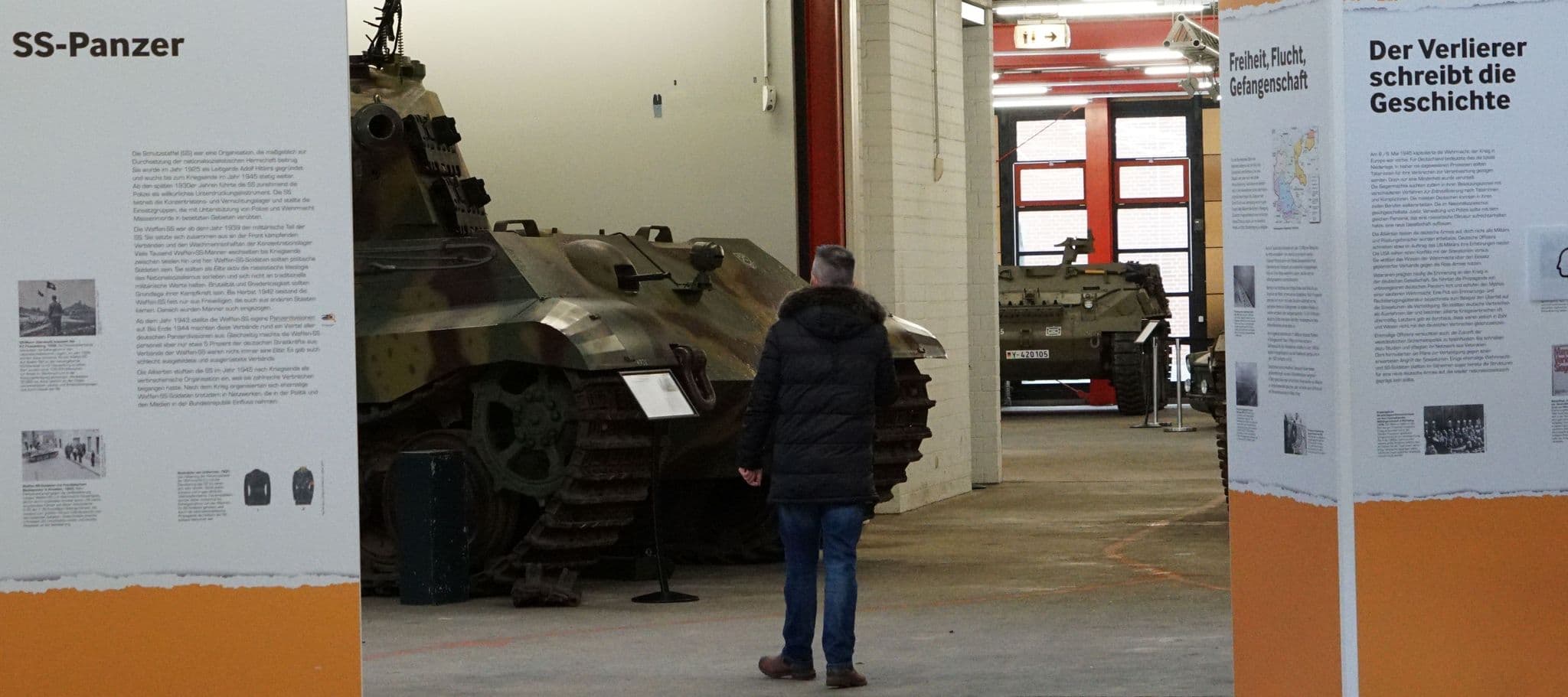

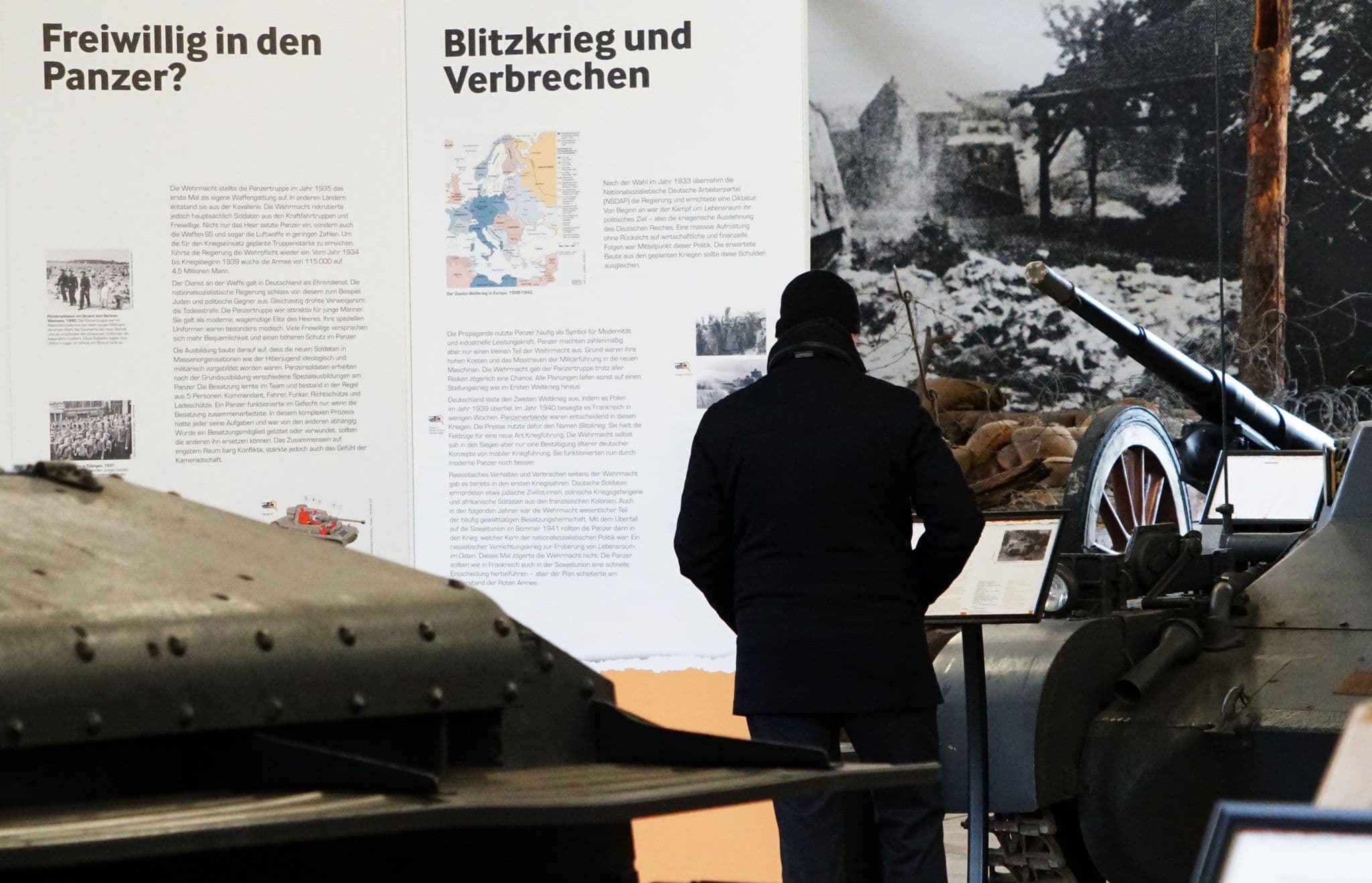
Deutsches Panzermuseum Munster
Die Dauerausstellungen bietet auf über 50 Tafeln eine umfassende Erzählung, die kritisch und multiperspektivisch auf die Panzer blickt. Von Technik- und Taktikgeschichte, über Wirtschafts- und Sozialgeschichte bis hin zu Kultur- und Politikgeschichte und vom Beginn der Panzerwaffe bis zu den Zukünften des Panzers finden sich die verschiedensten Blickwinkel auf die Panzer.
In der Ausstellung ist nun auch die Thematik „Leiden, Töten, Sterben“ mit Gewaltfotos als deutlich sichtbares Querschnittsthema in die Ausstellung integriert.
Die Ausstellung des Deutschen Panzermuseum Munster umfasst über 150 Großobjekte und erstreckt sich über 5 Hallen auf über 10.000 qm². Die Dauerausstellung erstreckt sich über die ersten beiden Hallen, in drei weiteren Hallen kann das Schaudepot frei erkundet werden.
Rund um den Besuch
Das Panzermuseum bietet ab 07/2024 einen kostenlosen Multimediaguide.
Es können im Voraus Führungen durch das Museum gebucht werden.
Am Ende der Dauerausstellung finden Sie den Museumsshop und eine Cafeteria.
Angaben zur Barrierefreiheit "Reisen für Alle"
Das Museum hat an dem Informations- und Bewertungssystem „Reisen für Alle" teilgenommen. „Reisen für Alle“ ist die bundesweit gültige Kennzeichnung im Bereich Barrierefreiheit.
